How To Cut Sugar From Your Diet In 5 Easy Ways
#30DaysOfSugar
How to Quit Sugar: Break Your Addiction in 5 Easy Steps
Sugar cravings are something that we all deal with, whether in savoury forms like a peanut butter sandwich, or sweet forms like a chocolate bar, but we all know having too much sugar in our diets is simply no good for us. The problem is that reducing the amount of added sugar we eat is often easier said than done (especially with sugar’s super addictive qualities). In this post, you’ll be learning some easy tips and solutions for cutting sugar in your diet!
Note from Isabelle: Hey guys! Today I’m super excited to be sharing this guest blog from Dom Uguccioni - sugar is something that you all know is a really important topic to me, so I’m really happy to be sharing this post written by him!
Sugar cravings are something that we all deal with, whether in savoury forms like a peanut butter sandwich, or sweet forms like a chocolate bar, but we all know having too much sugar in our diets is simply no good for us. The problem is that reducing the amount of added sugar we eat is often easier said than done (especially with sugar’s super addictive qualities). In this post, you’ll be learning some easy tips and solutions for cutting sugar in your diet!
I have broken this post out into 5 sections to help you think broadly about how to identify, and subsequently cut added sugar intake in your diet.
As a frame of reference, the America Heart Association recommends no more than 37 grams of (added) sugar per day for men, and no more than 25 grams per day for women.
One 12 oz. can of soda, and you’ve already exceeded this guideline for the day!
Defining Added Sugar
Added sugar means not naturally occurring in food or drink, for example, table sugar or high fructose corn syrup being added to food or drink to make it taste good. Most packaged products are required to list how much added sugar is in their product in the Nutrition Facts.
You can also tell if a product has sugar in it by reading the label; if you see “sugar, cane sugar, brown sugar, sucrose, high fructose corn syrup, molasses, raw sugar, etc.” listed, it means that sugar is added.
This processed added sugar is the worst for you, and is usually founds in all types of prepared foods (including savoury), from bread to Dijon mustard.
On the other hand, examples of food with naturally occurring sugar include fresh fruit (fructose) and milk (lactose), and when eaten in moderation, are usually fine for you.
However, the difference between processed and natural sugar (as well as how much natural/fruit sugar you should eat) can be tricky.
For example, while a fruit like grapes are higher in sugar than other fruits, they are lower on the glycemic index (if you don’t know what the glycemic index is, check out my post/video on it here).
Also, to get into the nitty gritty behind fruit/natural sugars and their health benefits/flaws, I also suggest you check out Isabelle’s post here.
How to find added sugar in foods you are eating:
1. Read the label
2. Look it up if not packaged
3. Be mindful of anything you add when you cook (honey, sugar, brown sugar, sauce, dressing, etc.)
How to cut sugar out of your diet:
Solution 1: Make a Plan to Cut Sugar
Ok, so you have decided to cut sugar from your diet. What does that mean for you? Are you talking 0 grams of total sugar per day, every day? How much sugar to you eat now, do you know the answer?
Start by keeping a food journal of everything you eat in a typical week, and be honest with yourself.
If you are eating food that is packaged, use the label to help you determine how many grams of added sugar are in each item you eat or drink.
Total your grams of added sugar for each meal.
Total your grams of added sugar for the day.
Total your grams of added sugar for the week.
What you have now is a starting point. Take a look at days of the week, or times of day when you tend to eat the most sugar.
When making your plan, be realistic with how much sugar you plan to cut, and in what time frame. Once you have your starting point, a realistic goal for your first step would be to meet the American Heart Association guidelines on added sugar, if you are not currently doing so.
If you need some help setting yourself up for a sugar free day, check out this post for some in depth steps.
Solution 2: Identify Sugary Foods/Drinks to Cut Immediately
Ok, so we all probably know about foods and drinks that obviously have a lot of added sugar, but just as an exercise lets name some that have no place in your new routine:
Soda
Fruit Juice/Juice Drinks
Alcohol (your body treats it the same way as sugar)
Coffee/Tea with added sugar
Other Sugary Beverages (look at the label)
Cake
Cookies
Pastries (etc.)
Fruit packed in syrup
Candy
Ice Cream/Other Frozen Deserts
Sugary Snacks (think coated snack bars)
You get the idea, and this is by no means an exhaustive list.
Now, what you need to do is identify which of these are part of your daily or weekly routine. Do you see any patterns you think may be hard to change? If yes, this brings us to our next topic:
Solution 3: Plan a “Treat Day”
Anytime you make a significant routine change, especially around food, it is important to build in a treat day.
Here are some things a treat day is, and purposes it should serve:
1. A reward for being disciplined, and making healthy choices.
2. Something you truly enjoy.
3. Well planned and scheduled.
4. No more than once per week.
Here are some things a treat day must not be, if you want to be successful:
1. Not an entire day; an example is, on Sunday I am going to have ONE piece of chocolate cake.
2. Not transferable, meaning I skipped my cheat day last week, so I now get 2 this week.
3. Not something to feel guilty about.
Making a change in your routine is not going to be without challenge, so try to anticipate how you will overcome obstacles and stick to your routine. One example is if someone brings cookies to work; if this is not your scheduled day to have a treat, it means you respectfully decline the cookies.
Solution 4: Be Aware of “Sneaky Sugar”
I think we can all logically understand the foods in topic 2 are loaded with sugar, and are usually easy to recognize.
But, if we want to truly limit ourselves to 25 or 37 grams of added sugar per day (or less), we need to be conscious of foods that may contain surprising amounts of sugar.
For example, did you know that one tablespoon of Ketchup has 4 grams of sugar? But it’s made out of tomatoes! Speaking of, a cup of generic pasta sauce contains 10 grams of sugar.
Even if something is promoted as a “healthy food”, always read the label and see how much added sugar is in it before taking the company at their word.
For example, take a cereal/fruit bar which will remain nameless/brand-less.
This product is marketed as a healthy snack, with whole grains. A look at the label tells us that this product has 120 calories, and 12 grams of sugar per bar; that is 40 % of its calories from sugar!!!
For more on healthy foods with sneaky sugar, check out Isabelle’s post: The 'Healthy' Foods That Are Actually Packed With Sugar
Going out to eat has many sneaky sugar traps, and not just in desserts.
Even if you order something like a salad at a restaurant, be aware of added sugar in a majority of dressings, and even some toppings. An alternative to sugary dressing is plain olive oil and vinegar (not balsamic vinegar, again due to sugar).
Many chain restaurants will give you their nutrition facts online, so you could look up added sugars and reasonably count on consistency.
If you see something on the menu with “glazed, honey, brown sugar, Honey Mustard, BBQ” as examples, chances are there is added sugar, and may be hard to know how much. If you like to go out to eat, consider this as an option for your treat day.
Solution 5: Be Realistic When Cutting Sugar
When you do your assessment of what you currently eat, start with where you are, and be realistic. Please note very clearly, it is not possible to eat a healthy, balanced diet with 0 grams of total sugar.
Keep in mind that we need vital nutrients from fresh fruits and vegetables, and they have some naturally occurring sugar.
Even unsalted, unprocessed nuts contain a small amount of natural sugar.
Added sugar however, is not an essential nutrient. The recommendation to start with a goal of meeting the AHA guidelines if you are above is a starting point. Ultimately, the more added sugar you cut from your diet, the better for your health.
Being realistic for you might mean that you stop drinking soda during the week, and have 1 can, 1 day per week as your reward.
Pro-tip: if you are trying to cut any sort of snack or drink from your diet, DO NOT have any of it at your house, office, or anywhere else readily available.
If something is going to be a treat, it is much easier to manage any temptation if you have to go out and buy it each and every time you decide to have some as a treat.
A word to the wise on making a shift like cutting soda (or cookies, etc.), you are going to need to find yourself a healthy alternative to replace it.
Let me explain, if we drink soda, eat a cookie, or whatever sweet thing we enjoy, we do it for 2 main reasons:
1. It is part of our routine, and makes us feel good.
2. We do it when we experience stress, and again it makes us feel good!
Even if you know something is not healthy and you need to change it, you need a healthy alternative, or all you have working for you is will power.
Find what that is for you…green tea, seltzer, water with lemon?
Whatever your healthy alternative is, you need to be excited about it! You need to be able to say, “I can’t wait for my afternoon green tea, it gives me energy and antioxidants”!
If you do not get excited about your lifestyle change and the healthy alternative, all you have is to say to yourself “I do not drink soda, no soda”! To think about not doing something, the first thing your mind has to do is focus on the thing you do not want to do!
Your healthy alternative does not have to be food or drink, it could be going for a 15 minute walk, for example…get creative, and get excited!
5 Solutions to Cutting Sugar: Summing it Up
1. Make a plan to cut sugar.
Take a little time to figure out how much sugar you can realistically reduce from your diet to get started, for example, cutting out your soda intake or committing to taking a day completely sugar free. Make sure you don’t overcommit (like trying to go 100% sugar free forever), as this will be very hard to stick to and may end in a sugar binge.
2. Identify the small ways you can cut out sugar.
Look for the smalls foods that you can gradually reduce from your diet, and work on cutting them out. Some examples include:
- Soda
- Fruit Juice/Juice Drinks
- Alcohol (your body treats it the same way as sugar)
- Coffee/Tea with added sugar
- Other Sugary Beverages (look at the label)
- Cake
- Cookies
- Pastries (etc.)
- Fruit packed in syrup
- Candy
- Ice Cream/Other Frozen Deserts
- Sugary Snacks (think coated snack bars)
3. Plan a treat day.
An important way that will help you stick to your new low sugar or sugar-free diet is to plan a time to indulge in your favourite sweets.
A treat day should be:
1. A reward for being disciplined, and making healthy choices.
2. Something you truly enjoy.
3. Well planned and scheduled.
4. No more than once per week.
5. Not an entire day; an example is, on Sunday I am going to have ONE piece of chocolate cake.
6. Not transferable, meaning I skipped my cheat day last week, so I now get 2 this week.
7. Not something to feel guilty about.
Making a change in your routine is not going to be without challenge, so try to anticipate how you will overcome obstacles and stick to your routine. One example is if someone brings cookies to work; if this is not your scheduled day to have a treat, it means you respectfully decline the cookies.
4. Watch out for hidden sugar.
Sugar likes to find its way into lots of different food, sweet or savoury.
In order to prevent you from accidentally sugar on a day you’re avoiding added sugar, make a list of the alternative names for added sugar. You can find a full list in Isabelle’s FREE 27 Hidden Sugar Foods to Watch Out for Checklist + Shopping Guide!
5. Keep your sugar cutting goals realistic.
Being realistic for you might mean that you stop drinking soda during the week, and have 1 can, 1 day per week as your reward.
Also, another thing to do would be to find or make a sugar free replacement for your favourite sugary foods, like using a sugar free mayo instead of ketchup on your burger.
At the end of the day, beating sugar cravings can be hard, but it’s not impossible!
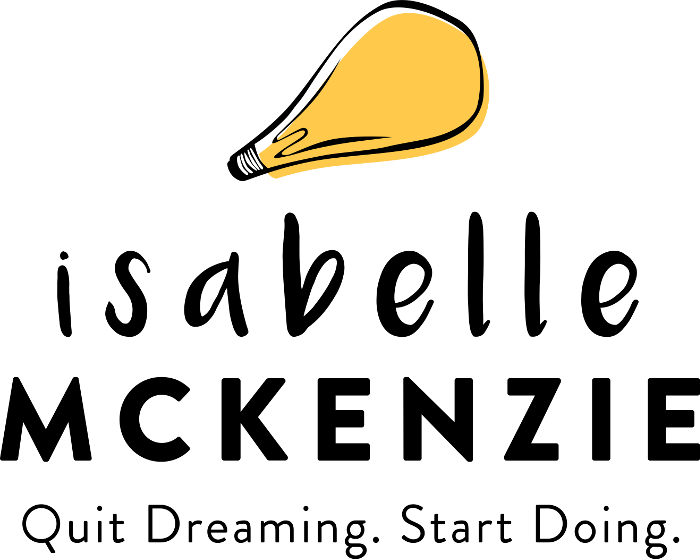

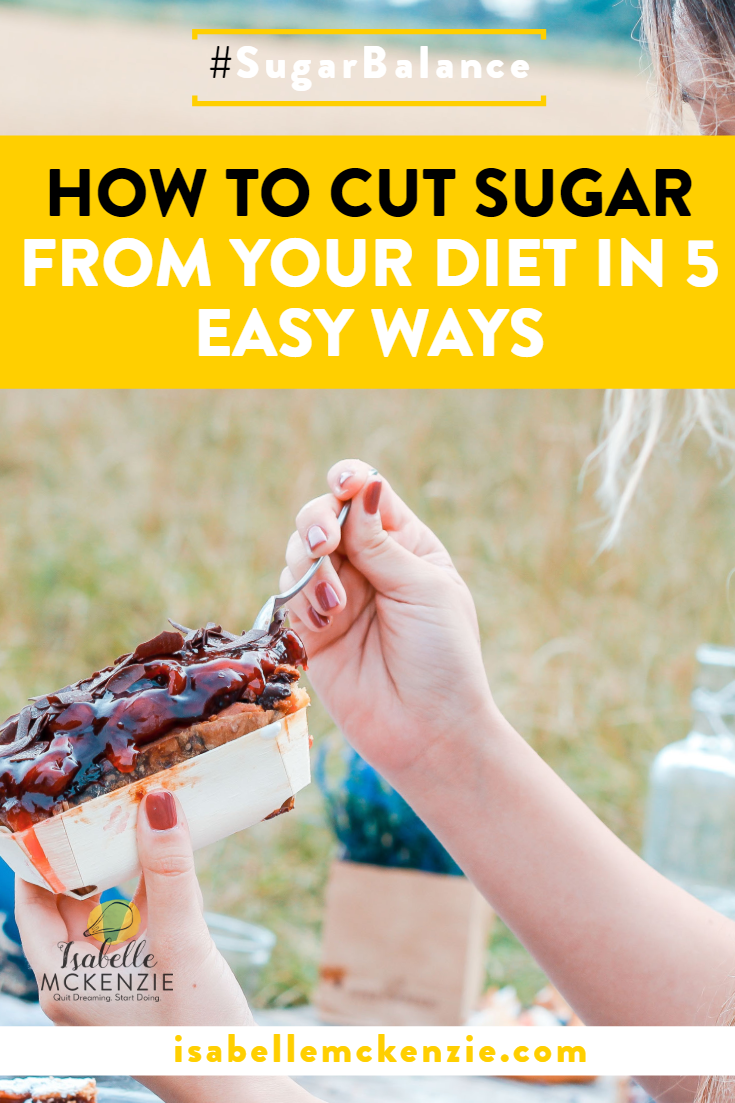
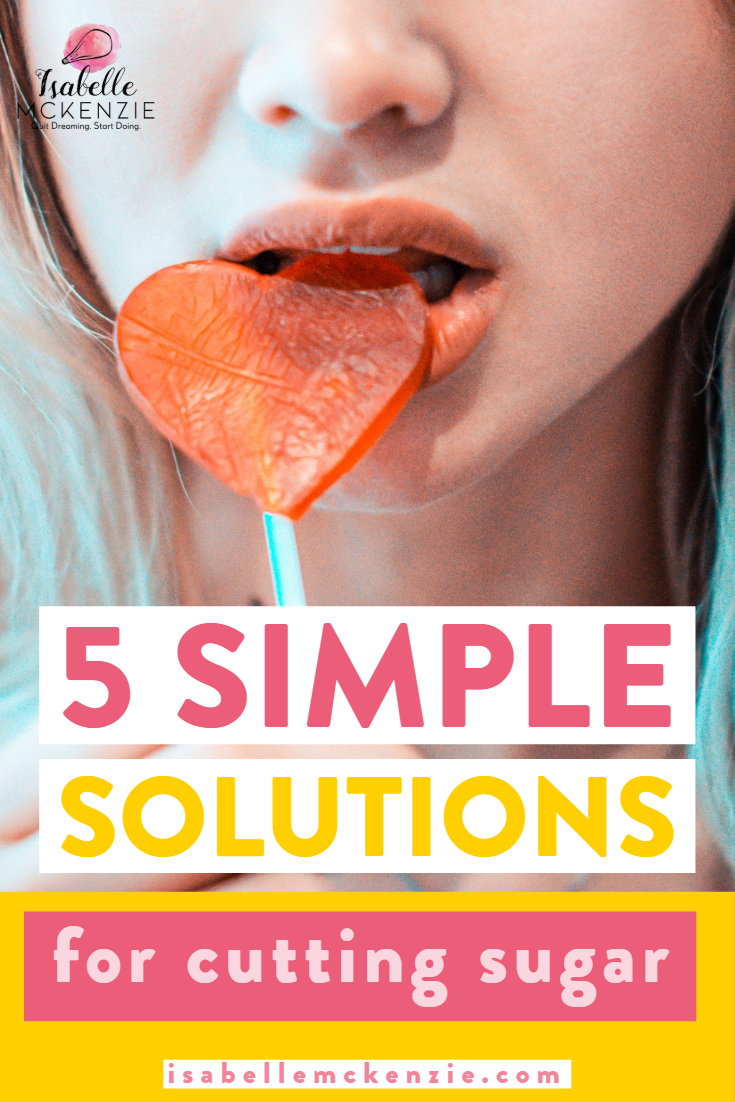


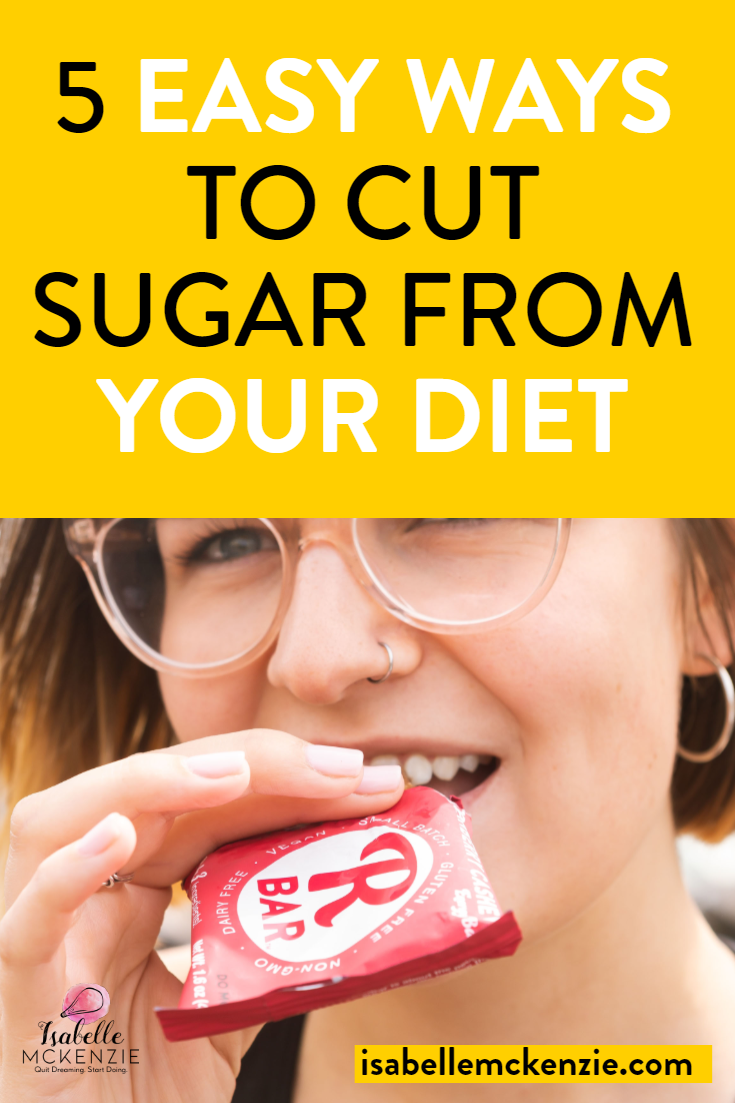
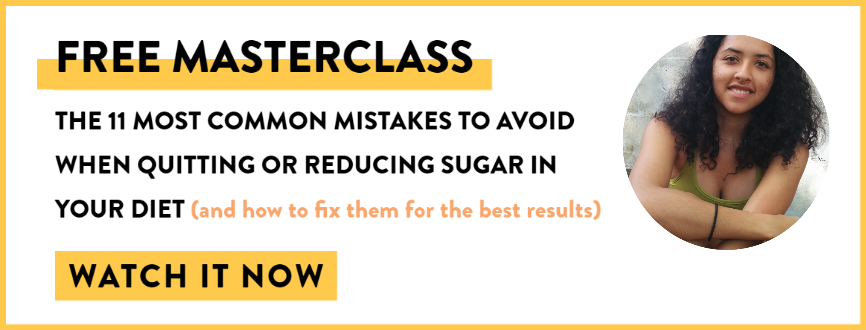








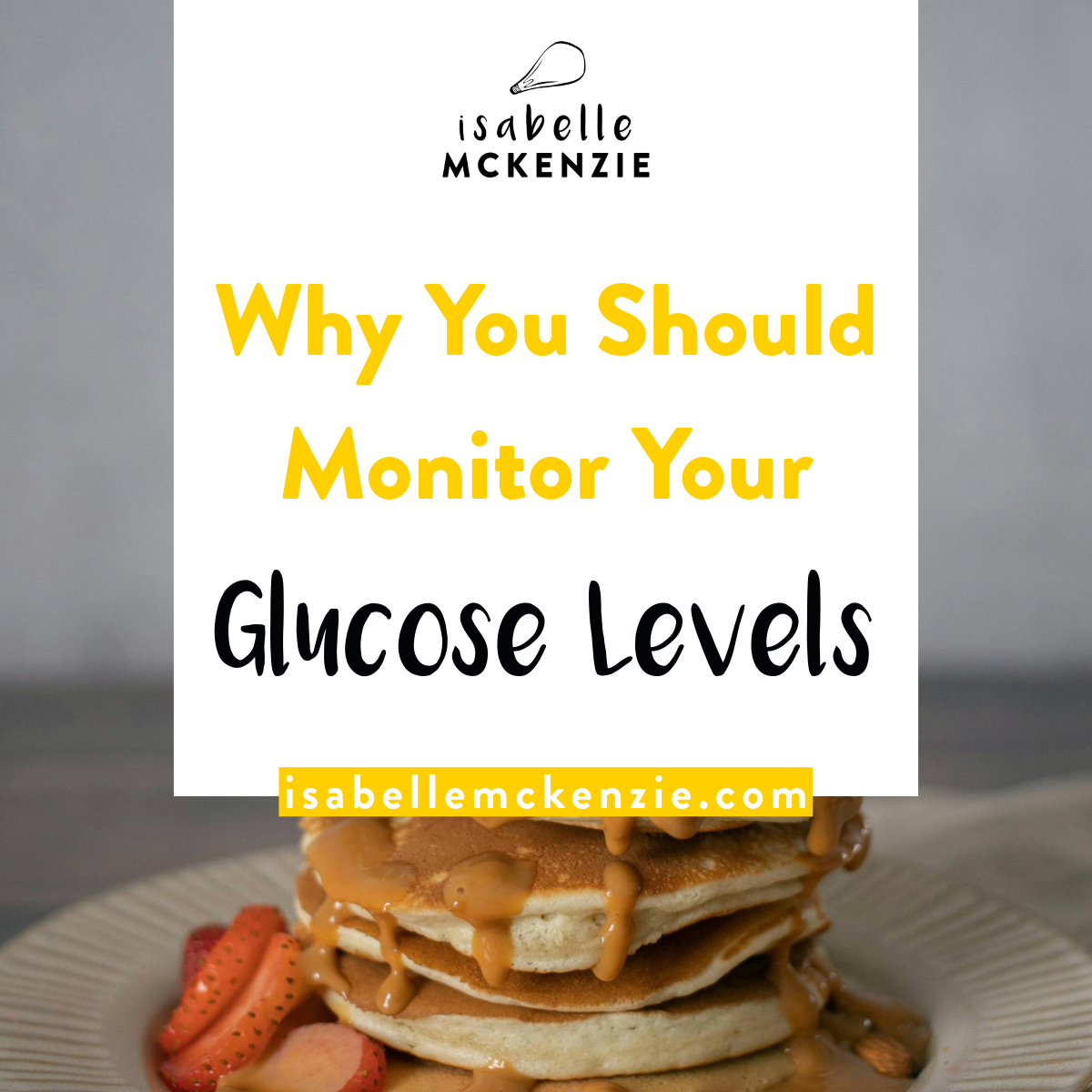




Follow me on: Facebook | Twitter | Instagram | YouTube
Dom Uguccioni is a husband, father, full time College Administrator, and also operates a Health and Fitness Blog 10minutetakeaways.com. Dom has been a degree in Exercise Science, has been a Personal Trainer, and an NCAA Student Athlete and All American in Track and Field.
Dom’s inspiration for writing about Health and Fitness is his family, and wanting to share his gained knowledge and life experience with others.